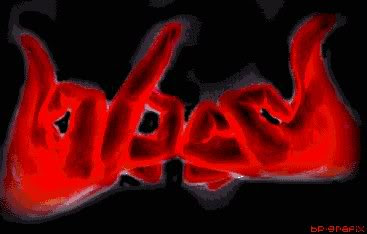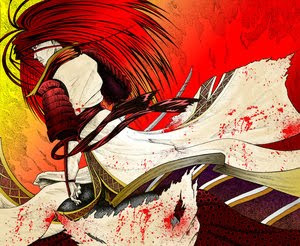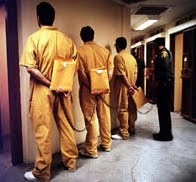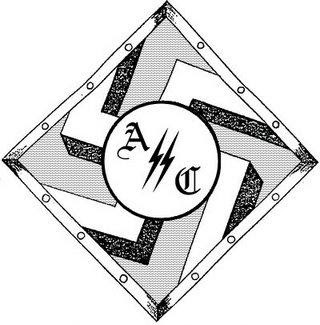
The introduction of Crack or
“Rock” Cocaine in the early 1980’s, had a monumental impact on changing the psyche of the Crip and Blood street gangs. The Crips versus Bloods wars continued, but the allure of making fast money selling “crack” became the highest priority. Members of both the Crips and the Bloods gangs, started selling “crack”.
They utilized the same “selling” methods they had always used when they sold PCP. Basically selling “crack” from street corners, parks, out of vehicles, etc. As “Crack” caught on, the gang members were overwhelmed at the demand. PCP had basically been just a “ghetto” drug, but “Crack” was different. Gang members had difficulty “rocking” it fast enough to keep up with the demand. “Crack” crossed all racial, economic and social barriers. It was not only attractive in the “ghetto”, but it was equally, if not more attractive, to those living in the suburbs. This drug was an instant money maker for these street gangs.
Gang members tried to devise various methods of distributing the “Crack” to accommodate the high volume of “customers”, without actually standing on the local “street corner” risking arrest themselves. As a result, a new phenomenon appeared in the South Central area. “Crack” Houses.
“Crack” houses were homes that had been modified to meet the needs of the drug dealers, plus be a place that would be easily accessible and convenient for the drug buyer. The windows and doors of these houses were all re-enforced with steel security bars. The front security screen door was usually covered with a metal mesh sheet with small holes, and a mail type slot. This allowed the dope dealer inside the house to see who was coming to the front door. It also prevented the buyer from identifying the actual person who was selling them the dope. The money and “Crack” would be exchanged through the “mail slot”. Note: the drug suppliers (gang leaders) themselves would never go into these houses for fear of being arrested.
Generally a few gang members would always be inside these houses. Their belief was that a few extra gang members would offer greater protection for their operation, plus if the house was ever raided by the police the dope could be destroyed easier and faster. In addition, the extra bodies made it more difficult for the police to identify the actual individual that distributed the drugs through the door. This would also make any potential prosecution a little more difficult.
Operating a “Crack” house was a new learning experience for both gangs and law enforcement. For law enforcement, the main problem was being able to enter the house expeditiously, before the drugs were destroyed. For the gang members, it was all about reducing the amount of cocaine that they would lose if their house were raided.
Law enforcement entry techniques developed through the trial and error method. Ever form of entry you could imagine was considered, and sometimes utilized. From rubber wheeled tank type vehicles ramming through the houses to vehicles with wenches pulling off the security bars were just a few. Naturally all of these early methods took time to set up and deploy. As a result they were basically ineffective, except for partially destroying the homes which had usually been rented.
As soon as gang members saw law enforcement setting up one of these types of warrant operations in their neighborhood, warning whistles could be heard throughout the area. The “Crack”, and the dealers were usually gone by the time these operations were set up and implemented. Over time entry techniques were developed that were reasonably stealth and very effective. Some small entry teams could be in a fortified “Crack” house in less than 30 seconds.
The gang drug leaders would initially furnish the houses with enough “Crack” to last a day or so. If law enforcement started to make entry they would immediately start flushing the rock down the toilet. The problem gangs encountered was that they could usually only flush one time, as the water had normally been cut off by law enforcement. A number of “rock” houses kept additional bottles of water on hand should this situation occur, but this was very cumbersome.
As law enforcement became more effective in their entry techniques, gang members cut back the available supply of “crack” to just a couple of hours to minimize any potential loss. They also found a better way of disposing of the “crack”. They would keep a large pan of water boiling on the stove. If law enforcement appeared, they would destroy the “crack” by putting it into the boiling water.
By the middle 1980’s the “Crack” house phenomenon was beginning to disappear. Pagers were becoming the newest rage for the drug dealers. The pagers opened up new methods and possibilities for distributing their “Crack” cocaine. Almost every gang member had his own pager.
Other noticeable changes begin occurring during this time frame. Drug distribution “territories”, along with the Crip and Blood gangster culture, started spreading throughout the city. Both Crips and Bloods begin vying for some of this new “virgin” territory. This caused inter gang violence to reach a fever pitch. Daily shootings became the norm. Eventually, Blood and Crip drug leaders found a common bond that they could all agree on. “Money”.
Some of the gangs that were in the forefront of “Crack” distribution were noticeably more visible, more powerful, and more dangerous. Money was coming into these neighborhoods faster than the gang members could spend it. Gang members bought everything from thoroughbred race horses, prize winning hogs, jewelry, to custom low riders, etc. Money was no object.
A few of these gangs were the:
Mob Piru “Mob James”, “Country Al”, Johnsons, et. al
Grape Street Crips “Honcho”, “Mcgill”, et. al
Santana Block & S/S Crips “Whiskey”, “Gangster”, “Turtle”, “Twins”, et. al
Wayne Day, aka “Honcho” had also purchased his own pager service. Various Crip and Blood gangs utilized his service. Most likely the Blood Gangs did not realize the pager service was owned by their rival “Honcho”.
Gang leaders, like “Honcho”, “Harry O”, McGill, McGowans, Johnsons, et. al, had greater dreams. They could see the potential financial windfall that they would reap if they were able to distribute Rock Cocaine throughout the nation. They followed up on those dreams. They started capitalizing on this lucrative nation wide drug distribution venture by relocating “home boys” in the major cities across America. They also knew the feared Los Angeles gang reputation would help them over come any local neighborhood resistance.
While gang members like “Honcho” were fulfilling their dreams of a nation wide “crack” distribution ring other gang members, like “Easy E”, etc., who had pockets full of drug money, wanted to be singing super stars. They used their drug money to rent studio time to chase those dreams.
Numerous other groups like “Eight Ball”, “NWA”, etc. also tried to break into the entertainment field. “NWA” (niggars with attitudes) were Crip gangsters from Compton. “NWA” was one of the first groups to be moderately successful with their “anti-establishment” gangster lyrics. They were also the forerunners of the successful Compton (Mob Piru, Atlantic Drive Crips, etc.) gangster rappers that appeared on the scene in the 90’s.
A nation wide “crack” distribution ring, spread of the Crip and Blood gangs throughout ever major city in America, and gangster rap was the legacy left by the “crack” dealing OG’s of the 1980’s.
Source: LASD Gangs - Curtis Jackson
 The Arizona Aryan Brotherhood prison gang is a white supremacist group whose members believe in having pure bloodlines in the white race. The group formed in the Arizona Department of Corrections in the mid 1970's.
The Arizona Aryan Brotherhood prison gang is a white supremacist group whose members believe in having pure bloodlines in the white race. The group formed in the Arizona Department of Corrections in the mid 1970's. 
















